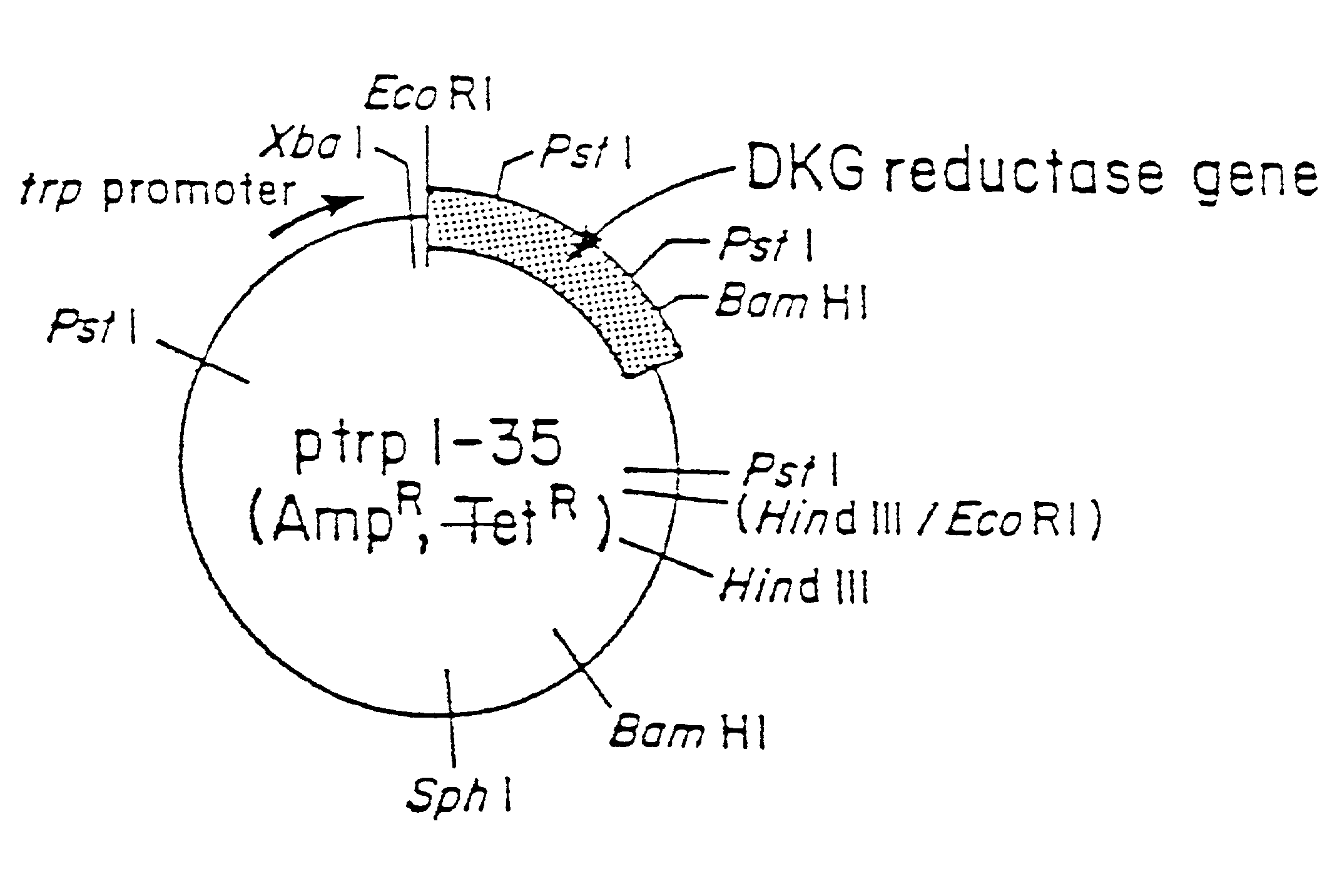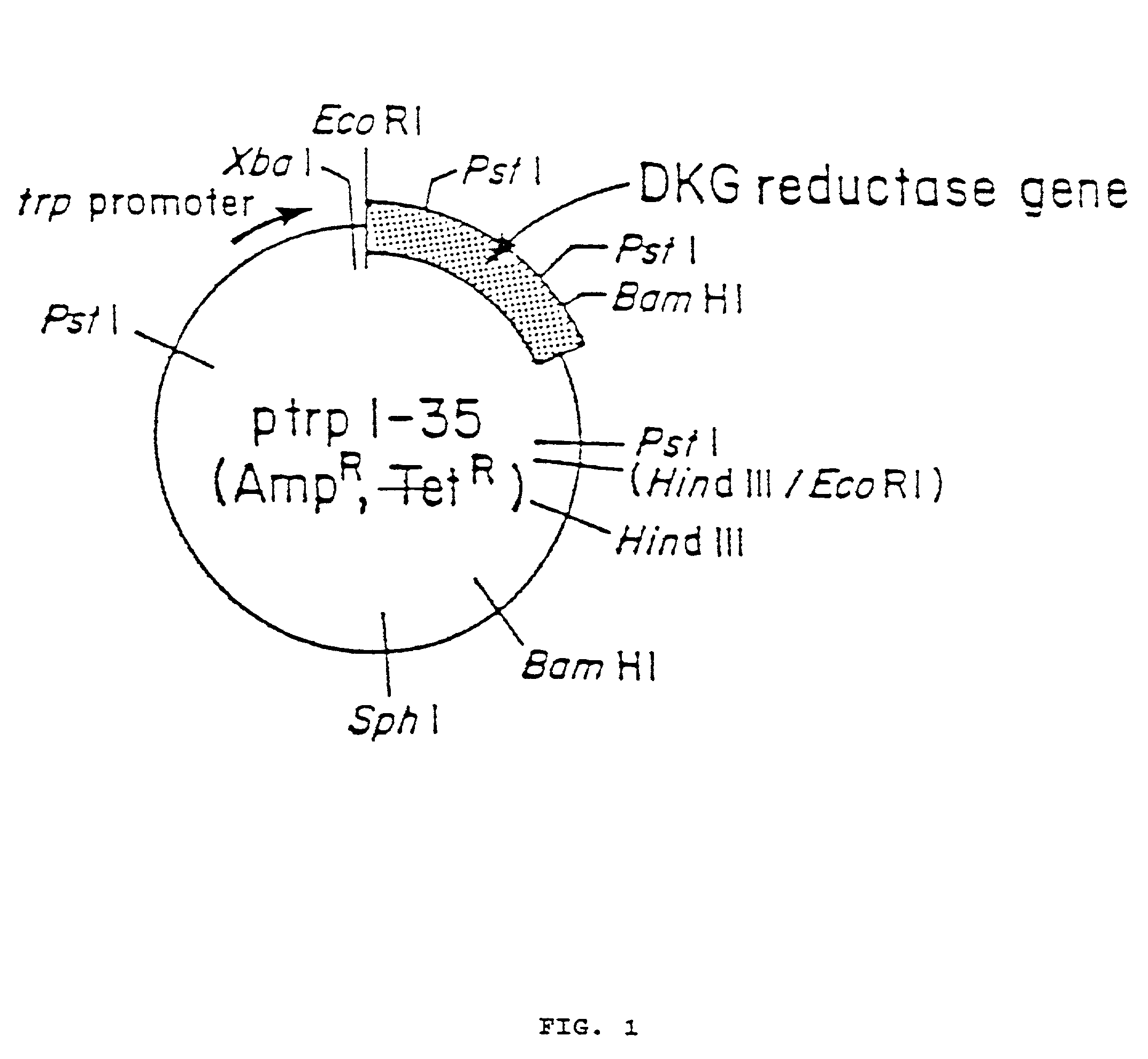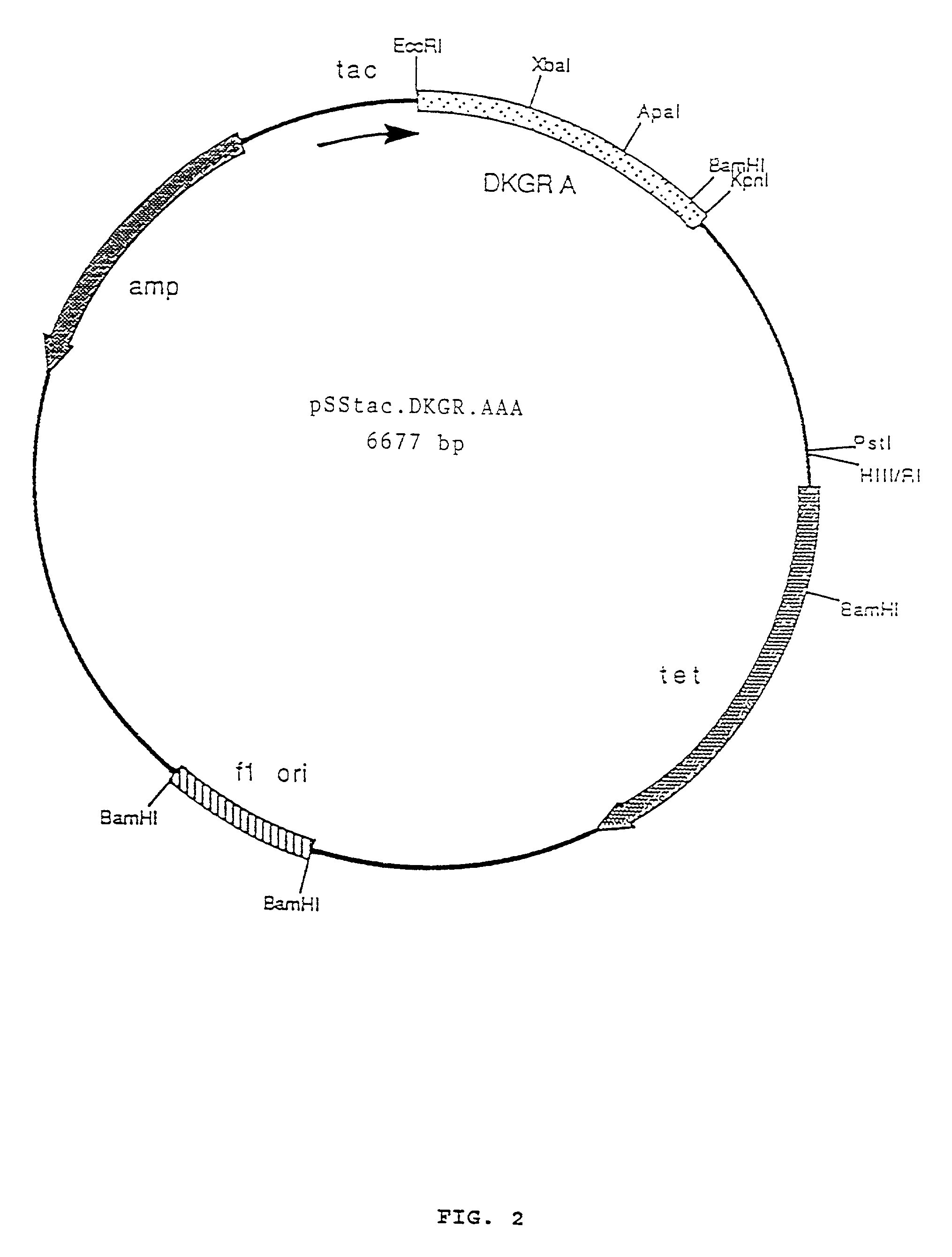Enzymes for the production of 2-keto-L-gulonic acid
a technology of enzymology and gulonic acid, which is applied in the field of enzymology for the production of 2ketolgulonic acid, can solve the problems of inability to determine whether a particular protein is present, and the active site of 2,5-dkg reductase a is not optimally configured, so as to improve expression, stability, and/or catalytic activity.
- Summary
- Abstract
- Description
- Claims
- Application Information
AI Technical Summary
Benefits of technology
Problems solved by technology
Method used
Image
Examples
example 1
Construction of Plasmid pSStac.DKGR.AAA for Mutagenesis
[0063]An aliquot of plasmid ptrpl-35 was digested with EcoRI and HindIII restriction enzymes and the resulting 1690 base pair fragment purified by agarose gel electrophoresis. This fragment was then ligated into EcoRI and HindIII digested vector M13 mp19. The resulting recombinant phage (called M13 mp19.DKGRA) was used to isolate a single stranded template form of the phage for subsequent mutagenesis. The template was mutagenized with three oligonucleotides to introduce three new restriction enzyme cleavage sites to the 2,5-DKG reductase A gene. These sites were all ‘silent’ in that although they introduce a new restriction cleavage site to the DNA sequence, the amino acid sequence of the protein coded for remains unchanged, due to degeneracy in the genetic code. The three mutagenic oligonucleotides and the changes introduced are as follows: 1) oligonucleotide XbaA has sequence 5′ CGCGAAGCTGGCTCTAGATCAGGTCGAC 3′ (SEQ ID NO:2) an...
example 2
Site-Directed Mutagenesis of the 2,5-DKG Reductase A Gene
A. Preparation of Template DNA for Mutagenesis
[0066]E. coli cells (strain XL1-Blue, Stratagene Corporation) bearing plasmid pSStac.DKGR.AAA were grown in LB media (Sambrook et al., Molecular Cloning: A Laboratory Manual, Cold Spring Harbor Press, A.1 (1989)) to early log phase, and infected with helper phage VCS-M13 (Stratagene). Infection with helper phage provides needed factors for the packing and secretion of the single-stranded form of plasmid pSStac.DKGR.AAA. The infected cells were grown overnight with shaking at 37° C., and the next day the cells were removed by centrifugation at 10,000 rpm for 10 minutes in a Sorvall SM24 rotor. The supernatant containing the packaged plasmid was retained and the cell pellet discarded. The packaged plasmid was precipitated by the addition of ¼ volume of 2.5 M NaCl, 20% PEG (polyethylene glycol). After addition the mixture was stored at room temperature for 20 minutes, and then the pre...
example 3
Expression of Wild-Type 2,5-DKG Reductase A in Acetobacter Cerinus
[0072]Plasmid DNA was introduced into Acetobacter cerinus (ATCC No. 39140) by electroporation, as described (Wirth et al, Mol. Gen. Genet. 216 (1):175-177 (March 1989)) using a Genepulser apparatus (Biorad Corporation). Cells were grown to mid-log phase (OD550 ˜0.2-0.8) in 100 ml LB medium and recovered by centrifugation at 5,000 rpm in a Sorvall SS-34 rotor for 5 minutes at 4° C. The cells were resuspended in one half volume of ice-cold electroporation buffer (300 mM sucrose, 7 mM sodium phosphate buffer, pH 7.0, and 1 mM MgCl2), again pelleted by centrifugation, and finally resuspended in 1 / 20th volume of electroporation buffer, and stored on ice until use.
[0073]Plasmid DNA (0.1 to 1.0 μg) was added to a 0.4 cm electroporation cuvette (Biorad Corporation) which contained 0.8 ml of the prepared Acetobacter cells. The cells and DNA were mixed in the cuvette and cooled on ice for 10 minutes prior to electroporation. T...
PUM
| Property | Measurement | Unit |
|---|---|---|
| pH | aaaaa | aaaaa |
| pH | aaaaa | aaaaa |
| volume | aaaaa | aaaaa |
Abstract
Description
Claims
Application Information
 Login to View More
Login to View More - R&D
- Intellectual Property
- Life Sciences
- Materials
- Tech Scout
- Unparalleled Data Quality
- Higher Quality Content
- 60% Fewer Hallucinations
Browse by: Latest US Patents, China's latest patents, Technical Efficacy Thesaurus, Application Domain, Technology Topic, Popular Technical Reports.
© 2025 PatSnap. All rights reserved.Legal|Privacy policy|Modern Slavery Act Transparency Statement|Sitemap|About US| Contact US: help@patsnap.com



